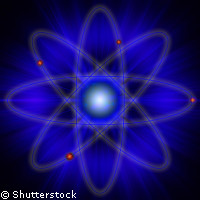ATLAS detector ready to answer fundamental questions of physics
The last element of new ATLAS detector at the European Organisation for Nuclear Research (CERN) has been lowered into position, paving the way for experiments to probe the nature of dark matter and look for extra dimensions of spacetime. 'This is an exciting day for us,' said Marzio Nessi, ATLAS technical coordinator. 'The installation process is coming to its conclusion and we are gearing up to start a new programme of physics research.' At 46 metres long and 25 metres across and weighing in at 7,000 tonnes, the ATLAS detector is the world's largest general-purpose particle detector. It consists of 100 million sensors that will measure particles produced in proton-proton collisions in CERN's Large Hadron Collider (LHC). Over 2,100 scientists and engineers from 167 institutions in 37 countries have worked on ATLAS. The first piece of the detector was installed back in 2003. Since then, many other detector elements have been lowered down the 100 metre-shaft into the ATLAS underground cavern. This last piece to be put in place is known as the small wheel. ATLAS has two of these devices, which are small only in comparison to the rest of the detector, as each weighs some 100 tonnes and measures 9.3 metres in diameter. Manoeuvring these elements is a tricky task. 'One of the major challenges is lowering the small wheel in a slow motion zigzag down the shaft and performing precision alignment of the detector within a millimetre of the other detectors already in the cavern,' explained Ariella Cattai, leader of the small wheel team. The small wheels are covered with sensitive detectors designed to identify and measure the momentum of particles called muons created in the LHC. As particles pass through a magnetic field produced by superconducting magnets, the detector will be able to track them to the width of a human hair. ATLAS comprises four major components. A magnet system is responsible for bending charged particles for analysis. An inner tracker measures the momentum of each charged particle, while a calorimeter measures the energies carried by the particles. The muon spectrometer identifies and measures muons. 'We believe that muons are signatures of interesting events,' commented James Bensinger of Brandeis University in the US, who has worked on ATLAS. A complex computer system has been set up to handle the vast amounts of data created by ATLAS. A trigger system will select 100 'interesting events' per second out of 1,000 million others. A data acquisition system will channel this data from the detectors to a storage facility, and the computing system will analyse 1,000 million events recorded per year. 'This is a remarkable milestone in the complicated construction of the ATLAS detector,' said Joseph Dehmer, Director of the Physics Division at the National Science Foundation in the US. 'The LHC is one of the most exciting physics experiments for this decade and beyond. We look forward to the groundbreaking results that are now just around the corner.' The ATLAS team will now focus on commissioning work in preparation for the start-up of the LHC this summer. ATLAS is one of six large-scale experiments involved in the LHC. Like ATLAS, Compact Muon Solenoid (CMS) is a large, general purpose detector which will analyse the myriad of particles produced by the LHC. As ATLAS and CMS were independently designed, they will be used to cross-confirm any new discoveries made. Two medium-sized experiments, ALICE (A Large Ion Collider Experiment) and LHCb (Large Hadron Collider beauty), are designed to analyse LHC collisions relating to specific phenomena. Meanwhile, the two smallest experiments, TOTEM (TOTal Elastic and diffractive cross section Measurement) and LHCf (Large Hadron Collider forward) will focus on 'forward particles', which are particles which just brush each other when the beams collide, rather than meeting head-on. When the LHC is switched on, scientists will have the opportunity to try and answer many long-standing questions in physics. For example, why do particles have the masses they have? Why does nature prefer matter over anti-matter? Other topics of interest include the nature of dark matter, and what kinds of matter existed close to the beginning of time. The LHC could even help us to look for extra dimensions of spacetime.
Countries
Switzerland



